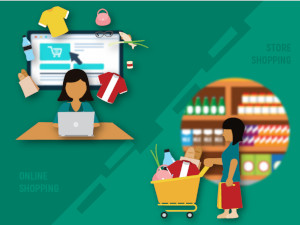Online shopping continues to grow in popularity, posing a threat to the future of retail stores in what some are calling a “retail apocalypse.”
According to The Washington Post, as many as 75,000 retail stores are expected to close by 2026 due to an increasing number of shoppers switching to online purchasing. Investment firm UBS says that online sales currently make up 16 percent of all sales, but by 2026, they will make up one quarter of retail sales, a significant jump in a relatively short period of time.
The average household in the U.S. spent $5,200 online last year, a nearly fifty percent increase from just five years ago, according to The Post.
This transition in consumer shopping preferences will have a devastating affect on the retail industry. UBS says that as many as 21,000 apparel stores, 10,000 consumer electronics stores and 8,000 home furnishing stores will close as a result.
Big name brands have already announced the closing of their retail stores, including Sears/ KMart, which in addition to the 1,300 stores closed since 2013, will be shutting down 80 more of its locations. Payless ShoeSource and Gymboree have also announced that they will be closing 2,100 and 800 of their respective locations.
Since 2017, UBS says that retailers have closed more than 15,000 stores, including those of big brand names Radio Shack, Toys R Us, Mattress Firm and GNC.
Interestingly, alongside the unprecedented closing of traditional retail stores, there’s been new interest from online businesses to expand their customer touch points to include physical locations. As these online stores begin to open retail locations, they are taking a vastly different approach from their predecessors.
For example, ModCloth, the popular online clothing brand, opened a store in San Francisco where customers could go to their “FitShop” showroom to browse and try on clothing. But instead of walking out with shopping bags, customers place orders and the items are shipped directly to their homes at no charge.
Other online brands like Casper and Wayfair are following suit with their own retail locations and pared-down offerings to keep inventory costs down. Customers can look through certain curated offerings, but ultimately they order exactly what they want online and have it shipped, rather than walking out the door with a purchase.
This could be the future of shopping, as customers prefer not to be overwhelmed with options, as they were in the heyday of big department stores. This model benefits companies as well. Instead of keeping large inventories on hand, they can curb costs by letting customers “try” before opting to purchase.
Ultimately, customers can count on more streamlined choices when it comes to retail stores in the future.
